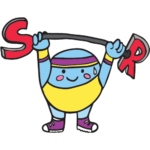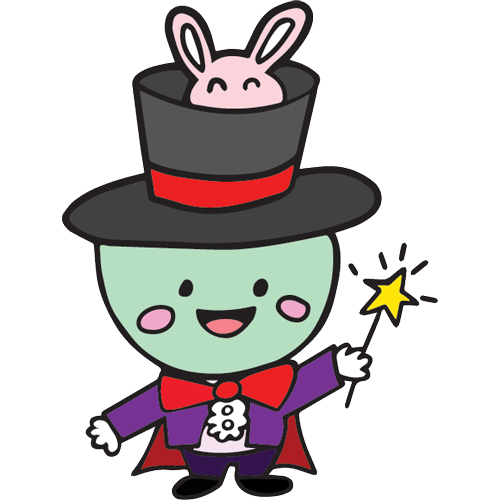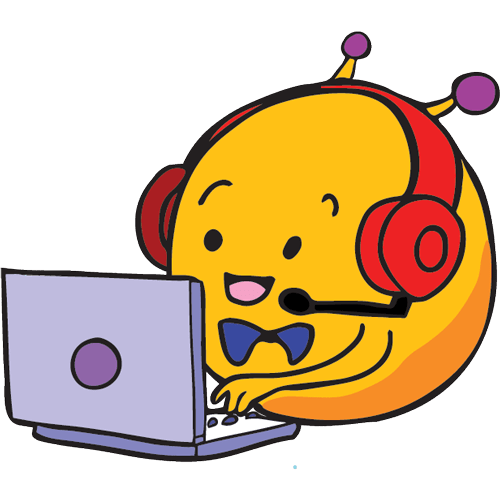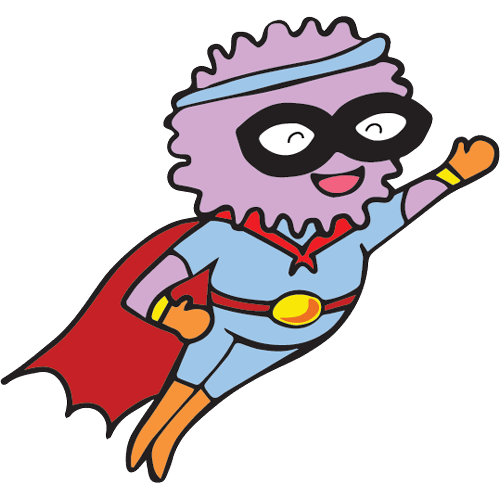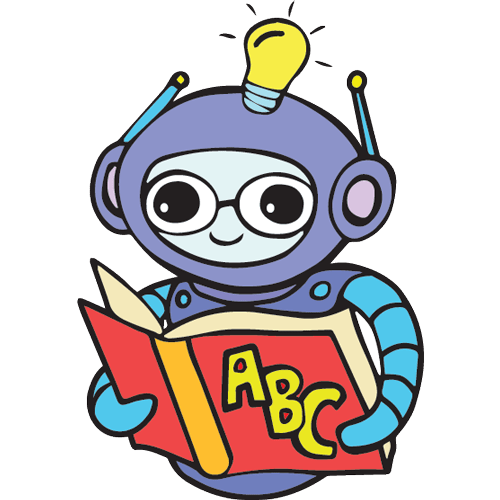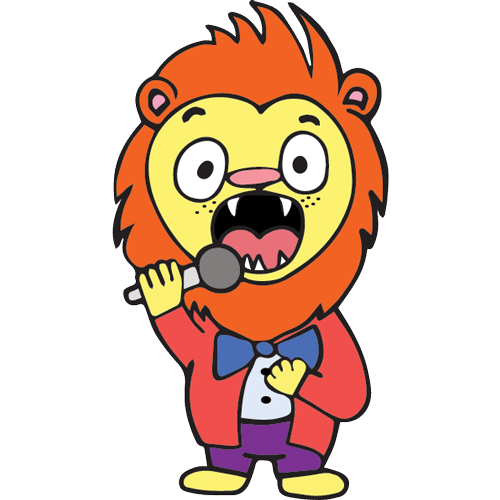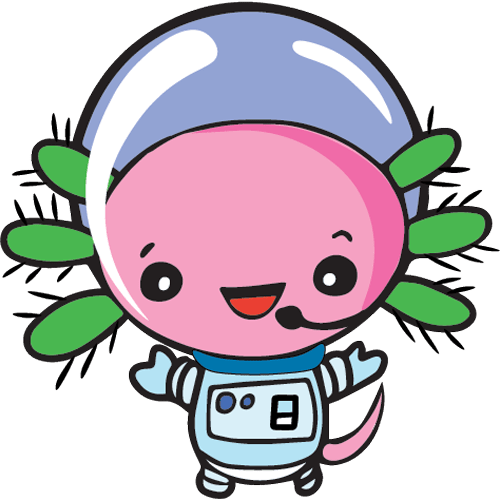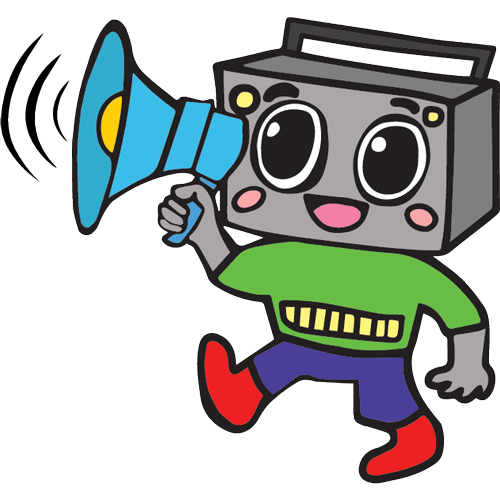Pediatric Speech & Voice Therapy Services in New York, NY
IMPROVE Your Communication
Pediatric Speech, Language and Voice Therapy Services
Your child is one-of-a-kind, and their development is unique. Open Lines®’ team of caring and solution-focused speech-language pathologists (SLPs) are here to give you answers to your questions about your child’s specific speech, language, literacy, feeding, and communication challenges.
For ADULT voice therapy, stuttering, and articulation services go here.

Why Does My Child Need Speech Therapy?
Learning is a complex process requiring the ability to listen, think, remember, understand, speak, solve problems, plan, process, organize, reason, make decisions, read, and write. The earlier your child or teen starts on their journey to overcome speech and language challenges, the sooner they will be able to communicate, read, write, and interact with others with confidence — ultimately leading to greater success in school and social settings.
For some children, another opportunity for academic and personal success is high-level tutoring. Your child may seem to be functioning fine without a speech delay or disorder, but their communication and literacy skills could be strengthened to give them an edge. In this case, your child would benefit from an enrichment program, designed for children when no delay is present. These programs are tailored toward enhancing and refining cognitive communication and literacy skills. Training in voice and public speaking can also help your child succeed and confidently speak in public. This type of training, though not always essential, may provide children with the confidence they need to succeed in life!
The Open Lines® PRESENCE™ Approach
Following an individualized assessment, we create a personal plan of action for your child or teen based on our PRESENCE™ Approach. In addition to overcoming cognitive-communication, speech, language, or literacy difficulties, we help your child navigate their personal journey to achieve a successful outcome that greatly enhances their academic and personal success.
The Open Lines® PRESENCE™ Approach is a proprietary, multifaceted technique that complements and supports the programs we provide for children and teens. Open Lines®’ PRESENCE™ Approach combines cutting-edge research from diverse fields and applies it to the latest clinical best practices. Our team of speech-language pathologists have unique, specialized training in and experience with the PRESENCE™ Approach. By combining the art and science of healing — innovative, empathic care and evidence-based research — our applied, multidisciplinary methodology will help your child achieve success.
Open Lines® offers 10 targeted programs for children. After your child’s assessment, we will design and implement a customized program based on one or more of our targeted programs and deliver with the Open Lines® PRESENCE™ Approach.
The Open Lines® Difference
Nationally certified in New York, New Jersey, California, and Florida, our team consists of professional researchers/writers for peer-reviewed journals, trusted academicians, reputable lecturers, and certified clinical experts who practice in and continue to collaborate with New York’s top academic medical centers and private schools, and who stay current with the latest research advancements. As leaders in the field, we are proud and honored to be frequently consulted by medical doctors, health professionals, and speech-language pathologists from around the world about their most difficult cases.
Unlike many small practices, we are not individual practitioners, rather, we are an integrated team of masters and doctorate-level expert clinicians working together to provide optimal treatment for each child. Extending beyond our team, at your request, we can collaborate with teachers, pediatricians, or other team members. We understand privacy is a serious matter. Some parents do not want their child’s school to know special care is being provided. Other parents, however, may want us to speak and collaborate with their child’s teachers. Whatever the circumstance, we work closely with you to ensure excellent communication among everyone. We only share authorized information with consent.
Whether you seek a team approach or feel private care is necessary, we adapt our therapy and communication to suit the specific needs of your family and child. Recognizing your child or teen has unique, multidimensional needs, we help them achieve their true, full potential.

Pediatric Speech and Voice Therapy Services
This information will provide you with the most up-to-date education and techniques needed to help you connect with your child through language and learning. Suggestions and strategies will facilitate your child’s ability to succeed in academic environments and will improve your child’s communication and social abilities. Most importantly, recommendations aim to increase your child’s confidence and ease with understanding, speaking, reading, and writing.
Our Focus Areas
Your child is one of a kind with unique developmental and academic needs.
Our team of speech-language pathologists and language/literacy specialists provide answers to all of your questions about what will help your child succeed.
Thinking
Executive Function
- Attending
- Remembering
- Organizing thoughts
- Perspective-taking
- Problem-solving
- Planning
- Reasoning
- Decision-making
Language
Understanding
- Auditory comprehension (semantics, morphology, syntax)
Expression
- Producing language (semantics, morphology, syntax)
Pragmatic Language
- Use and function of language
Reading
- Phonological awareness
- Decoding/reading fluency
- Reading comprehension
Writing
- Written language expression
Speaking
- Articulation/pronunciation
- Voice production
- Stuttering
Feeding & Swallowing
- Chewing
- Swallowing

Communication Disorders in Children
Communication refers to a set of integrated, complex skills which include using executive functions, such as attending and remembering, to understand and process language that is spoken or written. It involves finding the words to express thoughts and stating those words with accurate word-level grammar and sentence structures to clearly convey one’s ideas when speaking or writing. Conveying one’s ideas when speaking requires clear speech or articulation skills and a healthy voice, to make sure the listener can understand the words that are being expressed.
Children then need to understand and correctly use expressive language for a variety of functions, such as requesting, responding, asking, or when commenting. They need to use language with others based on social language rules and narrative standards to be able to successfully engage in conversation and tell stories. All of these skills are interconnected.
If your child struggles in any aspect of communicating, they may find it difficult to communicate with ease and confidence, succeed in academic settings, and participate fully in life experiences.
Speech Sound Disorders
Speech sound disorders refer to a group of difficulties related to the perception and production of phonemes (sounds), as well as the mental representation of sounds in a given language.
Children with speech sound disorders exhibit difficulties producing crisp, clear sounds when speaking, which can make their speech difficult to comprehend. They may struggle to accurately differentiate sounds and make appropriate sound-to-letter correspondence. Articulation difficulties are correlated with delays in reading development, as they make decoding (reading) and encoding (writing) text more challenging.
Speech sound disorders can have functional origins or may be organic in nature. Difficulties with articulation may be characterized by a child omitting a sound, making sound substitutions or distorting a sound, which can make speech difficult to understand. Difficulties with phonology are demonstrated by the child using predictable error patterns called phonological processes that affect more than one sound or a class of sounds. Phonological processes are commonly used by children to simplify speech production and are frequently eliminated in early childhood. Organic speech sound disorders describe disruptions in speech that arise due to neurological causes (e.g., dysarthria, apraxia), structural differences (e.g., cleft palate, trauma from surgery), or sensory/ perceptual issues (e.g., hearing impairment). Research indicates children experiencing speech sound disorders may additionally struggle with reading (e.g., decoding, comprehension, and fluency), spelling, and writing. Thus, early intervention is strongly recommended to support overall language and literacy development.
Articulation Therapy
Who
Children who demonstrate speech motor errors that affect their ability to be understood by familiar and unfamiliar listeners.
Types
- Articulation delays and disorders occur when a child demonstrates errors when producing speech sounds that result in reduced intelligibility and can lead to frustration.
- Phonological delays and disorders focus on predictable, rule-based errors children employ to simplify speech and affect multiple sounds that typically should have disappeared 6 or more months earlier.
Assessment
Assessment for speech sound disorders includes administration of a standardized assessment measure, speech sampling, oral motor exam, case history, and parent interview.
Treatment
Articulation therapy follows a hierarchy that includes helping the child accurately perceive sounds produced accurately vs. in error. This is followed by helping the child to accurately produce the targeted sound(s) in isolation, single words, phrases/sentences, reading (if the child is able to read), structured conversation, and spontaneous speech. Visual and verbal cues and models are used to help the child achieve accuracy and are faded as soon as possible to encourage self-monitoring, independence, and generalization. Specific cues about the placement of the articulators and manner of airflow are individualized for each client.
Home Exercise
A key component of articulation therapy is a strong home exercise program. Regular practice of correct treatment targets is essential for generalization.
Childhood Apraxia of Speech (CAS)
CAS is a treatable neurogenic speech sound disorder characterized by difficulty making precise and consistent movements needed to produce clear speech sounds. This occurs in the absence of neuromuscular deficits: speech musculature is normal and does not reflect abnormal tone or strength.
In CAS, the speech structures have difficulty performing volitional, accurately-sequenced movements. This leads to inaccurate and variable production of speech sounds and words as well as groping to find articulatory postures. Errors can then affect the rate, rhythm, and stress pattern when speaking.
CAS can be idiopathic or have an unknown origin. Children with CAS typically do not have other observable neurological conditions; however, CAS can arise secondary to a complex neurological disorder, such as autism, fragile X, or Prader-Willi syndrome. CAS can also be associated with a neurological injury, such as a stroke, seizure, tumor, or infection.
Dysarthria
Dysarthria is an umbrella term used to describe a group of neurogenic speech sound disorders caused by weaknesses in the muscular control and coordination of the subsystems required for speaking.
In dysarthria, speech is affected, because the muscles involved in respiration, phonation, resonance, and articulation have difficulty initiating and executing movements with the necessary speed, strength, range of motion, timing, and accuracy required for crisp, clear words. Dysarthria can impact breathing, voicing, and different aspects of speaking. As a result, speech may sound slurred, robotic or choppy, very fast or very slow. Voice may sound too quiet, monotone, nasal, hoarse, or breathy. Dysarthria can also impact a child’s ability to effectively chew and swallow, further impacting confidence and ability to function.
Stuttering
Stuttering refers to an interruption in the fluency of speech. Speech flow may be interrupted by dysfluencies, such as sound, syllable or word repetitions. Hesitations, prolongation of sounds, and blocks or stoppages of air or voice in the middle of speaking are other types of dysfluencies. Abnormal rate, excessive tension, struggle behaviors, and secondary mannerisms may also co-occur, but all can be managed with intervention. co-occur.
Who
Children who experience an interruption in the flow of speaking. Errors may be characterized by atypical speech rate, word and sentence level stress patterns, and dysfluencies. These may be accompanied by excessive tension, speaking avoidance, struggle behaviors, and secondary mannerisms. Speech difficulties can lead to frustration and feelings of anxiety, which further impact speech motor difficulties and impact communicative confidence.
Types of Dysfluencies
- Repetition of sounds, syllables, words, and phrases
- Sound prolongation
- Hesitations
- Interjections
- Blocks
Assessment
Assessment of fluency disorders includes collecting a complete case history; consultation with family members, educators, and other professionals; speech sampling, assessment of types and percentage of dysfluencies, speech rate, and secondary behaviors. Further evaluation of the relationship between stuttering and anxiety is also assessed.
Treatment
Treatment for fluency is individualized for age, severity, and types of dysfluencies include:
- Lidcombe Approach: An evidence-based behavioral treatment program for children under the age of 6. This program involves parent education and training to help families implement strategies in everyday speaking scenarios.
- Resonant Voice Therapy: Use of this voice treatment program is an innovative and very successful way to improve the coordination of speech breathing, vocal resonance, and articulation. Targeting voice results in a spreading of effects to all of the subsystems involved in speaking. This technique can reduce muscle tension and improve overall speech motor control.
- Stuttering Modification Techniques: Teaching these techniques to help children modify moments of stuttering to reduce dysfluencies, muscle tension, and secondary behaviors.
- Fluency Shaping Strategies: Strategies include teaching the child to shape various aspects of speech and voice production to make changes to the speech production system and facilitate fluent speech.

Receptive Language Delays or Disorders
Some children have difficulty with listening, understanding what they hear, and interpreting or processing information. This is referred to as receptive language delay or disorder.
While symptoms vary, many children with receptive language difficulties may have trouble comprehending what people are saying to them. This makes following directions, identifying information, answering questions, and following stories challenging. Children may also have trouble understanding nonverbal communication, such as gestures people use (e.g., nodding, pointing). This can look like a child is not paying attention when being spoken to or is not taking interest in stories when being read to. A child with a receptive language delay or disorder may also have difficulty comprehending and participating in conversation. This can affect participation in school activities and relationships with peers and adults.
Expressive Language Delays or Disorders
Expressive language delays or disorders refer to difficulties with spoken language. Children with expressive language difficulties may experience challenges with using age-appropriate vocabulary and word and sentence-level grammatical structures. Word finding and word retrieval may be particularly challenging when expressive language skills are weak.
Children with expressive language delays or disorders may not use the vocabulary words they appear to understand. They may struggle to find the right word when trying to communicate their ideas. They may have difficulty understanding the semantic relationships between words or make grammatical mistakes at word or sentence levels. As a result, they may rely on simple sentence forms when speaking in ways that do not completely or clearly reflect their thoughts. They may also have difficulty organizing and linking ideas or coherently sharing their ideas in an efficient manner. Consequently, they may make multiple attempts at reformulating their stories or provide information in a confusing order.
Both receptive and expressive language skills are considered foundational to proficiency in reading comprehension and written expression. Strengthening language skills and compensating for weaknesses help children better navigate relationships and participate more fully and successfully in activities within and outside of school.
Who
Children who demonstrate difficulty with language skills expected at their age and development, including asking/answering questions, utilizing words to communicate, understanding and telling stories, utilizing age-appropriate grammatical structures, speaking in organized sentences, following directions, and following/engaging in conversation.
Assessment
Assessment of expressive and receptive language skills includes a review of a case history, administration of standardized and informal measures, structured and unstructured language tasks, assessment of oral narrative skills and language sampling and analysis.
Treatment
Treatment for expressive and receptive language is highly individualized based on each individual child’s strengths and needs. For preschool-aged children, therapy involves embedding language targets into the natural context of play. Older elementary school students participate in structured activities to acquire skills needed to be confident and succeed in social and academic environments.
Social and Pragmatic Language Delays or Disorders
Children with difficulties with pragmatic language and social skills have trouble comprehending and using verbal and non-verbal language in social contexts to modulate social interactions. According to ASHA, social communication skills include, “the ability to vary speech style, take the perspective of others, understand and appropriately use the rules for verbal and nonverbal communication, and use the structural aspects of language (e.g., vocabulary, syntax, and phonology) to accomplish these goals.”
Who
Children needing help with social interactions; initiating and maintaining conversation; playing with others; developing and maintaining friendships; and understanding social cues, body language, figurative language, and social thinking.
Assessment
Comprehensive evaluation of verbal and nonverbal language, communicative confidence, voice, and speech skills.
Treatment
A variety of programs and strategies are taught, such as the social thinking curriculum; pragmatic language exercises and role-play; conversation element brainstorming and practice; education and mindfulness activities regarding various aspects of voice, intonation, body posture, and body language on communication; strategies for initiating and maintaining conversation and topic maintenance; perspective-taking; and education regarding figurate language use.
These refer to difficulty with a collection of skills required to decode and encode words, comprehend, and express written text. Written language expression also involves the process of organizing and planning language to write sentences and cohesive paragraphs. Research indicates strong oral language and expressive language skills (particularly in the areas of vocabulary, semantic relationships, complex syntax/grammar, and discourse comprehension) are essential for improving reading comprehension and written expression.
Phonological awareness refers to the understanding of phoneme-to-grapheme (sound-to-letter) relationships. It also includes the ability to understand word structures, such as syllables and phonemes (sounds). Further, phonological awareness involves the ability to manipulate these structures and perform skills, such as segmenting (sentences into words; words into syllables; syllables into words), and blending sounds and syllables. Speech pathologists help children develop an awareness of speech sound patterns, which are considered foundational to reading and writing.
Challenges with reading accuracy or decoding involve difficulty learning the names of the letters of the alphabet and the sounds those letters represent. Children with delays and disorders in this area have trouble with grapheme to phoneme conversion, or the ability to convert letters into sounds. As a result, this may affect a child’s ability to comprehend what they read. With correctly targeted intervention, children will learn to compensate for and strengthen areas of weakness to be successful readers.
Reading comprehension is an essential skill that involves understanding and interpreting written text. Children with reading comprehension difficulties experience challenges when attempting to understand text. Both basic and higher-level reading skills can pose a challenge, such as determining the main idea, identifying supporting details, inferencing, and predicting. As a result, meeting academic standards and continually finding a love of story can become very challenging. Visualizing and verbalizing techniques can be very helpful for improving difficulties in this area.
Written Language Expression Delays or Disorders
Written language expression involves a number of skills sets. Writing involves encoding, the ability to hear a sound and write the letter that represents that sound. Accurate use of writing mechanics, such as appropriate punctuation and capitalization, is another aspect of written language important to a child’s ability to express themselves in writing. However, this skill set also involves the translation of verbal expression into written text. Children who present with difficulties in this area may be challenged by writing paragraphs, essays, and stories that follow a logical sequence or include appropriate and descriptive story-grammar elements, such as an introduction and conclusion. Children who develop these skills have an easier time expressing themselves through writing.
Who
Children who demonstrate difficulty with age-expected reading and writing skills. These deficits may co-occur with verbal language difficulties or may be the primary focus of intervention. Difficulties may involve phonological awareness, reading comprehension, or production of language at the sound, syllable, word, sentence, or discourse level.
Assessment
Assessment of literacy skills includes a complete case history, administration of standardized and informal testing, assessment of written narrative skills, and analysis of written language samples.
Treatment
Treatment for literacy deficits builds on and encourages reciprocal relationships between written and spoken language. Each child’s individual strengths and needs are considered when selecting treatment targets. Intervention may include exercises to strengthen sound, syllable, and/or word level relationships. It also involves education and training of the elements included in the written discourse of paragraphs, multi-paragraph essays, and stories. For students in older elementary grades, literacy therapy can be curriculum-based.
Public Speaking for Children and Teens
Public speaking is an essential skill we rely on multiple times per day. We need these skills to converse with groups of friends, present projects in the classroom, or interview with prospective jobs or colleges. It involves the balance between a person’s thinking, language, emotions, voice, and speech production systems working in sync. When working to improve public speaking skills, Open Lines®’ SLPs help children strengthen their motor-speech system (breath support, projection, pitch/tone, intonation, vocal quality, and speech clarity). Children learn to apply strategies to improve the organization of their thoughts and decrease emotional stress to help them find words without delay and use language to maximize their delivery.
Who
Children who would benefit from strengthening presentation and public speaking skills to improve academic, social and passion-based communicative performance.
Assessment
Assessment for public speaking skills includes collection of a thorough case history, objective and perceptual voice and speech measures, administration of cognitive-communication measures, speech and language sampling, and analysis.
Treatment
Treatment for public speaking is highly individualized to address different scenarios in which the child will be speaking or presenting. Motor speech exercises for rate and loudness may be implemented to improve communicative competence in the public speaking scenario. Thought organization, word retrieval techniques, and expressive language formulation may also be targeted. Mindfulness and relaxation strategies are also taught and trained to address the impact anxiety can have on speaking within groups or in public.
Cognitive Communication and Executive Functioning Disorders
Cognition and language are interconnected. Cognitive communication and executive functions refer to the ability to pay and sustain attention, store and recall information, and process and manipulate information. These higher-level skill sets also involve planning, decision-making, problem-solving, and reasoning. Executive function skills support children’s ability to initiate tasks, self-monitor, regulate emotions, and control impulses. The integration of these skills with a child’s ability to understand and express language are important for communicative success.
Children with difficulties in these areas cannot consistently rely on this complex network of skills. Executing basics and complex cognitive-linguistic tasks can be difficult, such as processing what people are saying to be able to engage in conversation, abstractly and verbally reasoning, interpreting visual information, following directions, and comprehending spoken and written text. Treatment targeting these skills help children with thought organization and the ability to plan, and sequence ideas to communicate messages in a cohesive and coherent manner both orally and in writing.
Who
Children needing help with attention, recall, planning, organizing, and expressing information across communication modalities (speaking, reading, writing).
Assessment
Collection of a case history; consultation with family members, educators, and other professionals; comprehensive evaluation of cognitive-communication skills. Depending on the age of the child, assessments can evaluate aspects of complex comprehension (sarcasm, humor, intent, gist, or central theme) discourse, social communication, verbal reasoning, problem-solving, metacognition, and executive functions. Evaluations also assess integrative functions or activities in which combined skills or processes are required and can include timed scores to evaluate speed of processing.
Treatment
Exercises and strategies to improve the interplay between cognitive, communication, and emotional regulation skills in structured and real-life, integrative tasks.
Pediatric Voice Disorders
Pediatric voice disorders refer to any symptoms that negatively impact a child’s voice. This may involve difficulty speaking loud enough to be heard. However, in some cases, children may speak with a hoarse, breathy, or strained vocal quality and experience pain, discomfort, or fatigue when speaking. These symptoms may be the result of one or any combination of structural, physiological, behavioral, neurological, or psychological factors.
Who
Children who demonstrate changes in vocal quality, strain, discomfort, or vocal fatigue, or inappropriate pitch/loudness. Voice disorders in children may impact or interfere with communicating in academic and social settings, ultimately impacting communicative confidence, self-esteem, and daily voice use.
Assessment
Assessment for voice disorders includes the collection of a case history, administration of perceptual scales, oral peripheral structure and function, and objective measures to evaluate speech breathing, pitch and loudness control, and voice quality. Assessments also include examination of the influence of other factors that influence voice, such as speech rate, speaking situation, anxiety, and emotion.
Treatment
Treatment for voice disorders is individualized and takes several factors into account, such as age, severity, and etiology or the underlying cause of the voice disorder. Vocal needs in different settings (e.g., school, home, work) are also considered. Techniques may include, but are not limited to the following:
- Vocal Hygiene: Education about good vocal hygiene, including proper hydration and vocal use/misuse.
- Resonant Voice Treatment: Treatment focusing on achieving a healthy vocal fold vibratory pattern and healthy voicing by establishing a forward vocal resonance and easy phonation. Treatment follows a hierarchy from basic sound production through conversational speech.
- Deeper Diaphragmatic Breathing: Improves breath support and control needed for speech production.
- Strategies to improve vocal function and decrease extraneous muscle tension to improve voice quality and decrease vocal effort/fatigue.

Feeding and Swallowing Disorders
Feeding and swallowing disorders are sometimes called dysphagia. Eating or drinking can be broken down into four main phases in children: (1) oral phase (i.e., taking in liquid by bottle/cup/straw or biting and chewing/mastication, and the transportation of the bolus towards the pharynx/throat); (2) triggering of the swallowing reflex; (3) pharyngeal phase (i.e., transportation of the bolus through the pharynx), and (4) esophageal phase (i.e., transportation of the bolus through the esophagus to the stomach). Feeding and swallowing difficulties in any or all of these areas are sometimes referred to as dysphagia.
In late infancy, the oral phase comes under voluntary control, which is essential to allow children to begin to chew solid food. Safe and effective biting and chewing rely on appropriate sensory registration of the food source and coordinated motor response, which can be influenced by cognitive thought processes.
Feeding Disorders
Feeding disorders are problems with a range of eating activities that may or may not include problems with swallowing. One or more of the following behaviors may be noted in a child with feeding difficulties:
- Avoiding or restricting one’s food intake
- Refusing appropriate foods or liquids
- Displaying disruptive or inappropriate mealtime behaviors
- Failing to master self-feeding skills
- Failing to use appropriate feeding devices and utensils
- Experiencing less than optimal growth
Together, the long-term consequences of feeding and swallowing disorders can include:
- Food and oral aversions
- Aspiration pneumonia and/or compromised pulmonary status
- Poor weight gain due to undernutrition or malnutrition
- Dehydration
- Gastrointestinal complications, such as motility disorders, constipation, and diarrhea
- Need for alternative modes of nutrition and hydration
- Psychosocial effects on the child and the family
Swallowing Disorders
Swallowing disorders (dysphagia) can occur in one or more of the phases of swallowing and can result in aspiration (i.e., the passage of food, liquid, or saliva below the level of the vocal folds and into the airway) and a protective cough reflex.
Who
Children with difficulties feeding or swallowing. Children with a history of aspiration pneumonia, dehydration, malnutrition, and/or difficulty gaining weight. Children with food and oral aversion or pickiness. Children with difficulty biting or chewing, drinking from a cup or straw independently.
Assessment
Collection of case history and interview of parents. A comprehensive evaluation of oral motor structures and function. Observation and assessment of eating and drinking a variety of textures, temperatures, and bolus sizes. Assessment of head, neck, and postural control.
Treatment
Involves strengthening and compensatory maneuvers to help children with sensorimotor control feeding and swallowing. Techniques include optimization of positioning and posture, diet modifications, training on adaptive utensils and equipment, sensory techniques, and pacing.
Frequently Asked Questions
By 18 months, children are expected to be saying at least 20 words. If your child is between 12 and 18 months old and is not yet talking or has only a few words, we recommend taking action. Studies show early intervention is most effective in helping children develop language.
A speech language pathologist (SLP) will help determine whether your child’s language skills are age-appropriate. They will examine areas of strength and needs, and help identify the root cause of your child’s difficulties. At Open Lines®, we know that your child’s development is one-of-a-kind. That is why every program begins with an individualized assessment. We prioritize working with you to set goals for your child, give you answers to your questions about your child’s specific challenges, and work with you to see those goals achieved as quickly as possible.
Between 18 months and 2 years, children begin to combine words to form short phrases such as, “more milk,” and “all done!” If your toddler is using words to communicate, but you are concerned that their speaking skills are not developing as rapidly as their peers, it is strongly recommended you seek an evaluation by an SLP. A parent’s intuitive sense is usually spot-on.
Some children may have a difficult time stringing words together due to difficulties with motor speech coordination and articulation, while others may exhibit a weakness in expressive language skills. In the latter case, children may benefit from more explicit strategies to help them combine words to communicate using short phrases and sentences.
A licensed SLP will conduct a comprehensive and in-depth evaluation of your child’s speech, language, and overall communication skills to determine whether your child’s language skills are age-appropriate. The underlying factors that contribute to and maintain the difficulties will also be examined and addressed. Results of this evaluation will help your clinician design a plan of action with tailored exercises and evidence-based strategies to help your child address their specific challenges. The earlier a child receives intervention, the faster gains are made to help language flourish and communicative confidence increase!
Speech motor coordination is immature when children first learn to talk. As a result, it is common for children to simplify words containing multiple syllables (e.g., “nana” for “banana”) or substitute certain sounds for others that are easier to produce (e.g., “tup” for “cup”). This process of simplifying and substituting sounds is considered a normal part of typical speech development in young children.
These patterns usually disappear between the ages of 3 and 4 as children have more practice talking and acquire typical adult-like articulation. However, sometimes these patterns of substitution and simplification persist beyond the typical ages of elimination. This makes it difficult for your child to be easily understood by others and can become even more challenging as the length and complexity of their sentences grow. This can negatively impact relationships and play with peers and the ability to share their ideas with confidence.
If your child is 3 years old and is understood less than 75% of the time by friends, teachers, and family members, it is appropriate to seek a speech evaluation. An assessment will determine whether your child’s skills are age-appropriate and whether they may benefit from support to enhance their speech development.
At Open Lines®, a licensed SLP will conduct a one-on-one comprehensive evaluation of your child’s ability to accurately perceive and produce all sounds in the English language. The SLP will also look at how production changes if a sound is produced in the beginning vs. at the end of a word and will examine if the length of the utterance also influences production and speech intelligibility. This will help your SLP establish the nature of the speech sound errors and whether those errors are developmentally appropriate.
Further testing allows an SLP to try treatment techniques to determine if your child is able to accurately produce target sounds with models or multimodal cues (i.e., verbal, visual, and tactile cues.) This information is used to customize tailored treatment plans and exercises to help your child correctly and naturally modify how they produce sounds. This improves speech intelligibility, which also boosts confidence while speaking.
If your child does not consistently turn towards a person when their name is called or has difficulty following directions at home or at school, your child may have difficulty with attention and/or language. If your intuitive sense makes you feel as though something is wrong, a comprehensive evaluation of your child’s speech and language skills is strongly recommended to set your mind at ease. If your child is demonstrating difficulty with paying immediate attention, sustaining attention, or has difficulty following along at home or at school, it could indicate possible weaknesses in executive function, comprehension, and/or social-pragmatic language.
A licensed SLP at Open Lines® will guide your child through a series of in-depth tests which will examine cognitive communication to define the nature of the difficulties and why they are presenting themselves. Your SLP will work with you to design an action plan to build on your child’s strengths and address specific challenges and help them make progress and succeed as quickly as possible!
Speech refers to the physical production of sounds and words. It requires the coordination of several subsystems, including respiration (breathing), phonation (voicing), and articulation (using the jaw, teeth, lips, and tongue to make sounds). Children with speech delays or disorders may make speech sound errors, such as “wamp” for “lamp” or “gog” for “dog”.
Language can be thought of in terms of semantics (i.e., meaning), morphosyntax (i.e., word and sentence level grammar), and pragmatics (i.e., the ability to use language for a variety of functions.) Language refers to the ability to understand and express vocabulary, or meaning. We then manipulate and use words in different ways within sentences to reflect changes in meaning.
Finally, we use language with different functions (e.g., ask, answer, comment, negate) to share our thoughts and ideas with others. Children with language delays may not have many words to express their ideas, which can be frustrating, especially in the presence of other difficulties. They may speak in shorter, simpler sentences than is typical for their age or may have a hard time organizing and clearly expressing their ideas for others to understand.
Children may experience delays in speech, language, or both skill sets, but intervention will help to alleviate frustration and build communicative confidence so children fully participate in their relationships and activities.
At Open Lines®, we recognize that every child’s learning and development is unique. For this reason, every program begins with a comprehensive, individualized evaluation of your child’s speech and language with a licensed SLP. These tests help your SLP understand your child’s strengths, determine whether your child’s language skills are age-appropriate, and examine their areas of need. We then work with you to customize a plan of action including setting goals for your child, designing a plan of action, and answering your questions about your child’s specific challenges.
During sessions, your SLP will customize exercises and activities including drill-based exercises, games, and activities that simulate everyday experiences in ways that are fun and motivating for children and tailored to address your child’s specific needs. We also prioritize providing parents and other caregivers with the education, materials, and techniques needed to participate in the treatment process in order to continue practice at home and help see those goals achieved as quickly as possible.
The earlier the better! Studies show that the earlier the intervention, the faster the child will meet their goals. If you suspect that your child is exhibiting delays in their communication whether that be turning toward someone calling their name, saying their first words, or if they are struggling to read and write at grade level, we recommend taking action early and seeking a comprehensive speech and language evaluation.
A licensed SLP can help you determine whether your child’s language skills are age-appropriate, identify areas of strength as well as areas of delay or weakness, help assess the root cause of their difficulties, and design a plan of action to support your child’s growth and development.
We recommend taking early action if you are concerned that your child may not be meeting their speech and language milestones. Research indicates children are neurologically primed to learn, so the earlier they receive support and intervention, the quicker they will make gains and meet their goals.
If you are unsure whether your child is developing age-expected skills, a licensed SLP can help you determine whether your child’s language skills are age-appropriate. At Open Lines®, every program begins with a comprehensive one-on-one evaluation with one of our expertly trained licensed speech language pathologists.
Our clinicians guide your child through a series of tests that will examine various aspects of their speech, language, and communication in order to determine whether your child’s language skills are age-appropriate, identify areas of strength as well as areas of delay or weakness, help assess the root cause of their difficulties, and design a plan of action to support your child’s growth and development.
Knowing how to act in different kinds of social situations, join others in play, or make conversation with others can be confusing and anxiety-inducing for some children. Many children benefit from explicit instruction and guidance on how to navigate various social experiences.
The Open Lines® team developed a program to enhance social participation and help children develop meaningful friendships through various games and exercises that teach children how to vary speech style and language according to the situation, take the perspective of others, initiate and maintain conversations, focus attention, understand and appropriately use body language, expressions, and pitch and volume of voice to effectively interact with other people.
Right away! Typically, stuttering onset begins after the age of 3. Studies have shown that while many children will recover from stuttering on their own, there is no way to know which children will recover spontaneously and which will not. Moreover, research has revealed less than 10% of children will recover during the first year of stuttering making early intervention exceedingly important!
Early intervention is additionally important because studies show children younger than 6 years old who stutter experience social consequences such as bullying from peers. If stuttering continues into school years, it is increasingly more difficult to treat and can cause problems later in life.
Stuttering Program for Toddlers Stuttering Program for School-Age ChildrenIf your child is experiencing difficulties with reading, early intervention is the key. Parents should seek support to bolster these skills as soon as possible. This will facilitate a child’s ability to fully participate and excel in academic settings by helping the child access written information and knowledge needed for success in a variety of settings. Delays in reading often have a compounding effect on learning and can impact a child’s development across many subjects. However, intervention has been proven to be effective and can help your child establish a love of stories.
Reading difficulties can arise due to several factors. Phonological awareness skills may be weak, which impacts a child’s ability to be able to discriminate, identify, and manipulate sounds in spoken words. A child may have difficulty identifying sounds in the beginning, middle, or end of words. They may also have trouble segmenting sentences into words, words into syllables, and syllables into sounds.
Delays in reading can also stem from challenges when trying to read words by sight or when attempting to determine what sounds letters make, and how the sounds change when they are paired or grouped with other sounds. All of these difficulties may affect a child’s ability to comprehend what they read. Reading comprehension also requires other skills, such as attending, remembering, and inferencing, and integrating these skills may be difficult for some children. As a result, meeting academic standards can become very challenging.
At Open Lines®, our expertly trained licensed SLPs will guide your child through a comprehensive and in-depth evaluation of their literacy and language skills to determine strengths and weaknesses as well as the underlying cause of reading challenges. An appropriate plan of care will then be established to help your child strengthen skills and establish a love for reading at home and school.
Our therapists are licensed by the New York State Education Department (NYSED) as Teacher of Students with Speech and Language Disabilities and registered with New York City Department of Education (NYCDOE). Additionally, many team members are specially certified and trained in several literacy-specific programs including the Orton-Gillingham literacy Approach and the Lindamood-Bell method. Whether your child is at the “learning to read” or “reading to learn” stage of academics, we are here to help your child become a successful, confident reader!
Bilingual or multilingual children typically acquire language skills at the same rate as children learning one language. First words are typically expressed between 10-14 months old, and two to three-word phrases are produced between 18 months to 2 years of age (e.g., “more milk”).
Some studies have shown children may exhibit a “silent period” when a new language is introduced. During this time, your child may use less language as they begin to understand and use a new language. However, this typically only lasts for two to three, after which children quickly catch up to their age-matched peers.
Some bilingual and multilingual children may also mix grammatical rules or use words from both languages in a sentence. This is considered a normal pattern of dual-language acquisition and does not reflect a delay in language development.
Don’t be afraid to continue speaking all languages in your household! It is not detrimental for children (including those with speech-language impairments) to learn more than one language.
However, if you are concerned your child’s language skills are delayed, or if your child is frustrated by difficulties speaking in one or all languages, we recommended you seek an evaluation by a licensed SLP to ease your concerns. An SLP will perform a comprehensive evaluation of your child’s speech, language, and overall communication skills to determine whether their language is age-appropriate.
The assessment will identify areas of strengths and need and will confirm whether their language skills reflect typical patterns of dual language learning or a true delay. With this information, your clinician will work with you to design a plan of action with specific, targeted exercises customized to your child’s unique developmental needs to reduce frustration and improve their language skills and communicative confidence as quickly as possible!
Any time a language delay is suspected, early intervention is always recommended. Studies indicate that the sooner a child receives intervention, the faster they will be able to improve.
Language Discovery ProgramAbsolutely! Public speaking is a valuable life skill, although many children (and adults!) find it causes them a great deal of stress and anxiety.
Our Open Lines® licensed SLPs will help foster your child’s sense of ease and confidence speaking in a variety of settings. This is achieved by addressing both the physical, cognitive-linguistic and emotional aspects of communicating to maximize the impact of their delivery.
Following a comprehensive evaluation of your child’s speech and language skills, your clinician will determine your child’s strengths and needs — whether it be projection, breath support, pitch, tone, vocal quality, speech rate, clarity, or language organization and use — to better understand their unique skill sets and needs. We work with you and your child to develop a plan of action to optimize your child’s delivery, reduce stress, and enhance their comfort and ease across communicative contexts.
Improve Your Communication Through Speech Therapy
It is never too late for your child to improve their speech, language, or literacy skills. Our team can provide them committed care needed to address a variety of challenges. Let our supportive team help.
Contact Open Lines® today by phone at 212-430-6800, by email at [email protected], or through our contact form. You can learn more about the programs we offer here. If you are ready to help your child take the next steps to improve his or her speech and language or literacy skills, request an appointment to discuss your goals and review our service options.
Get in Touch With Open Lines®


